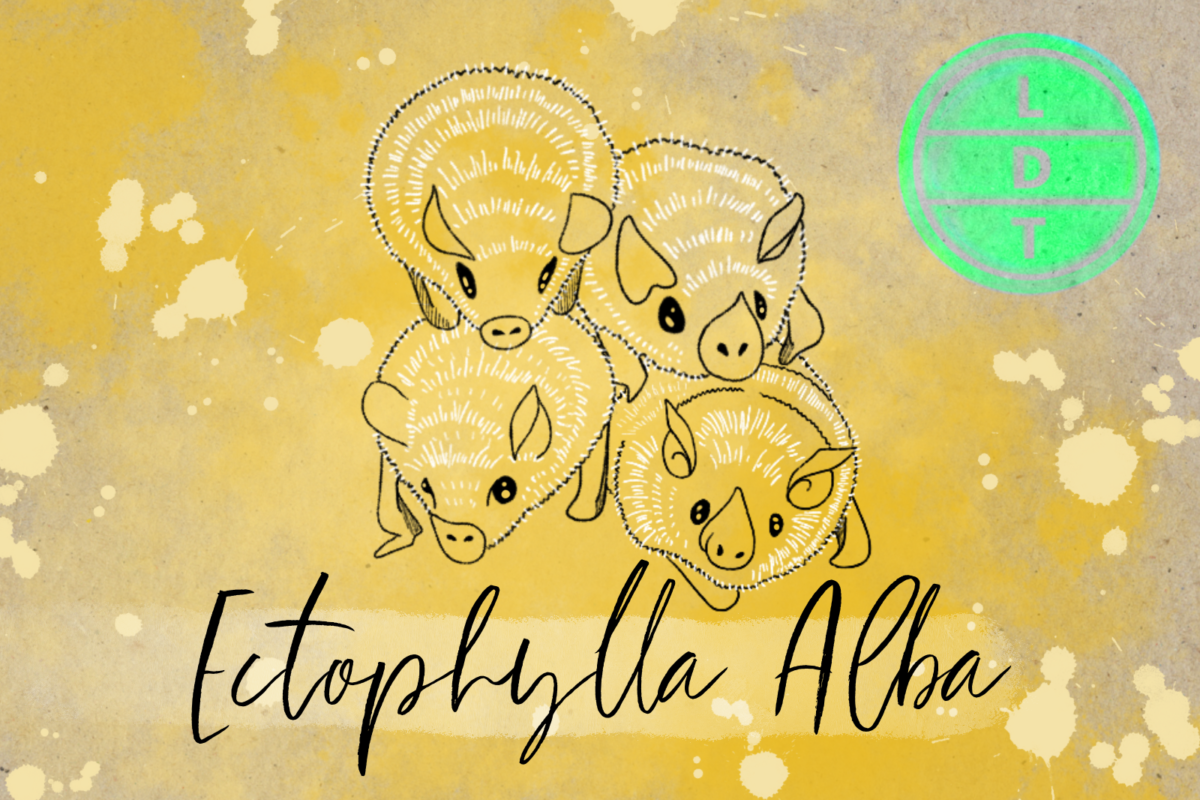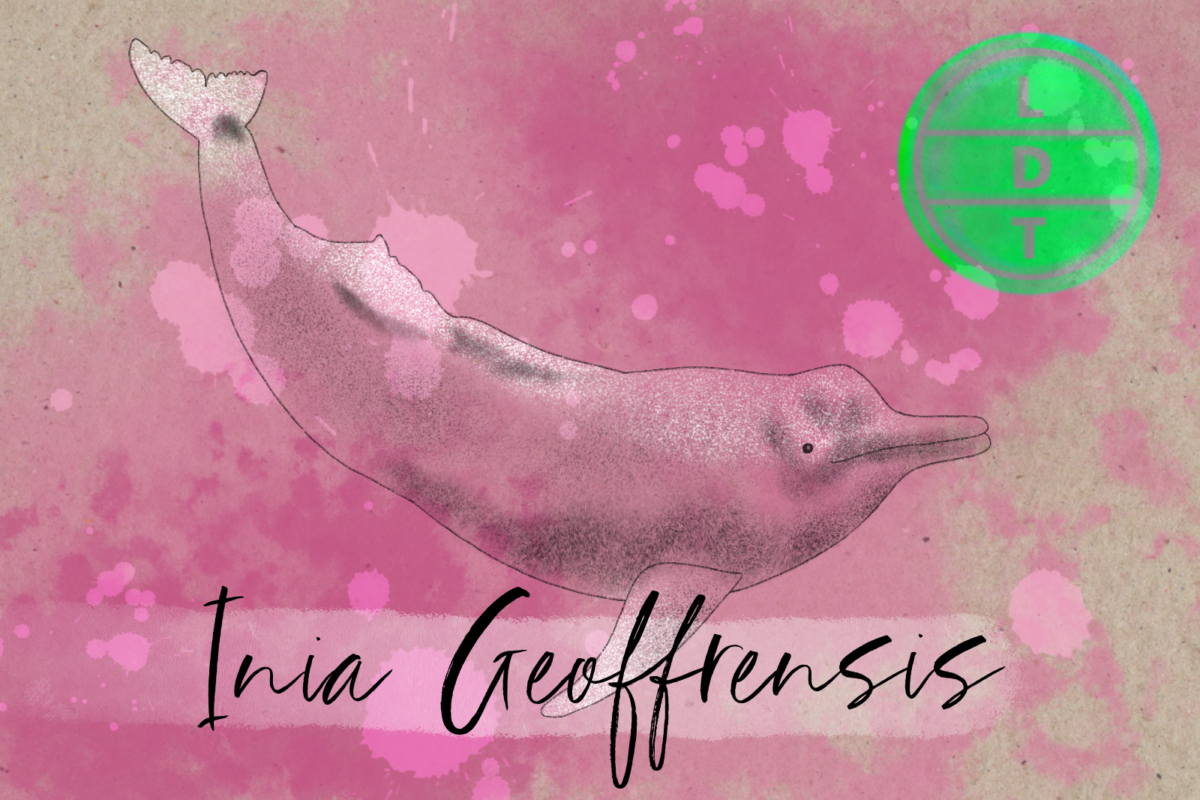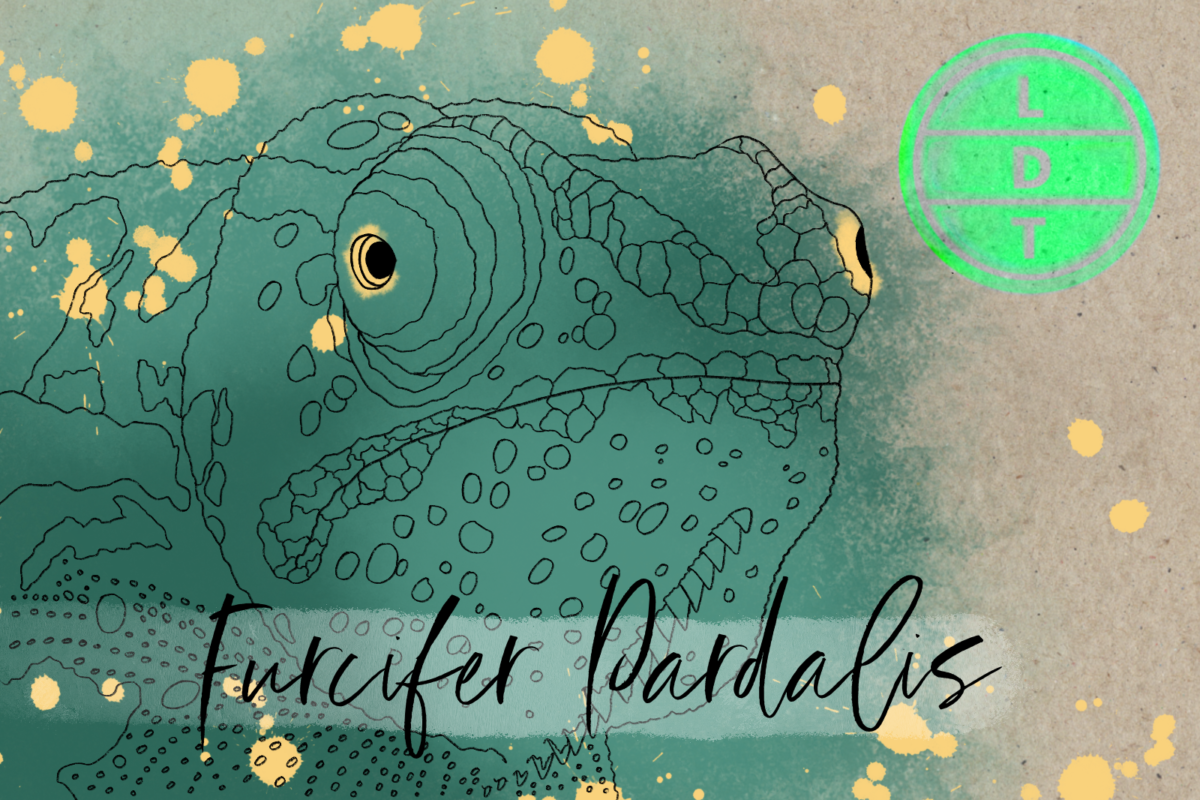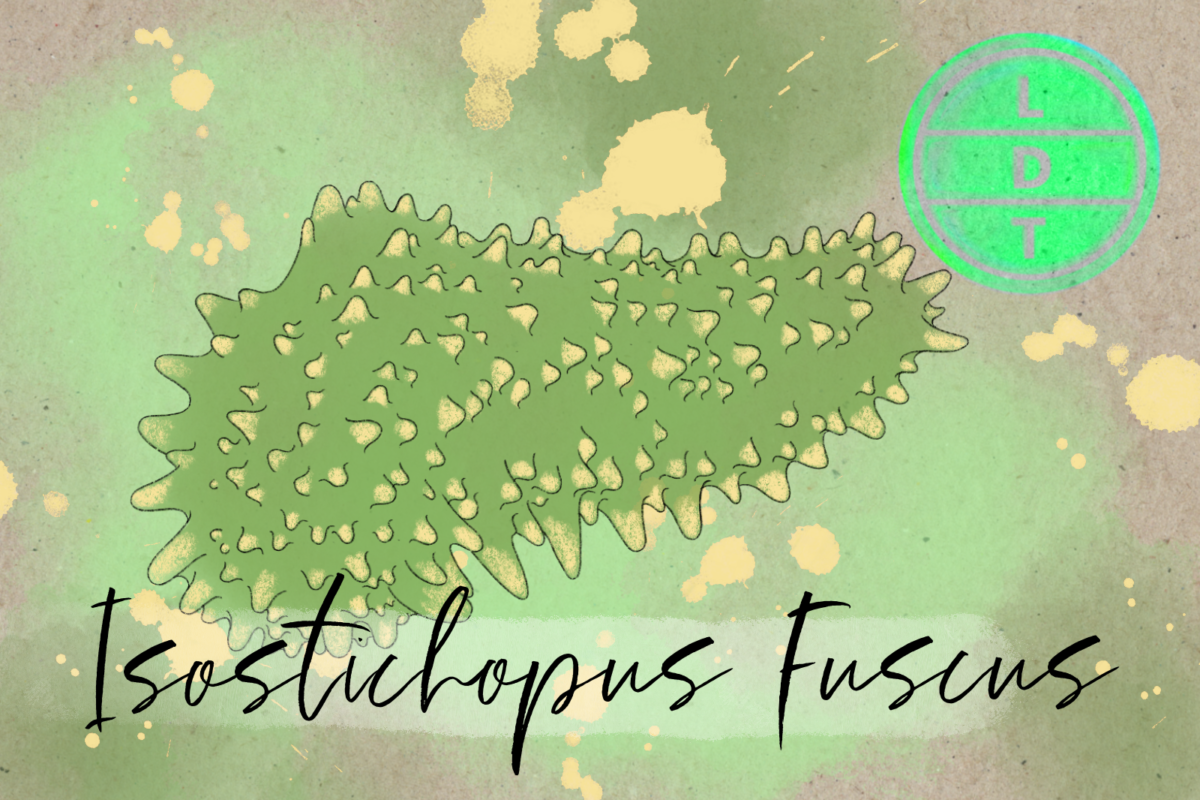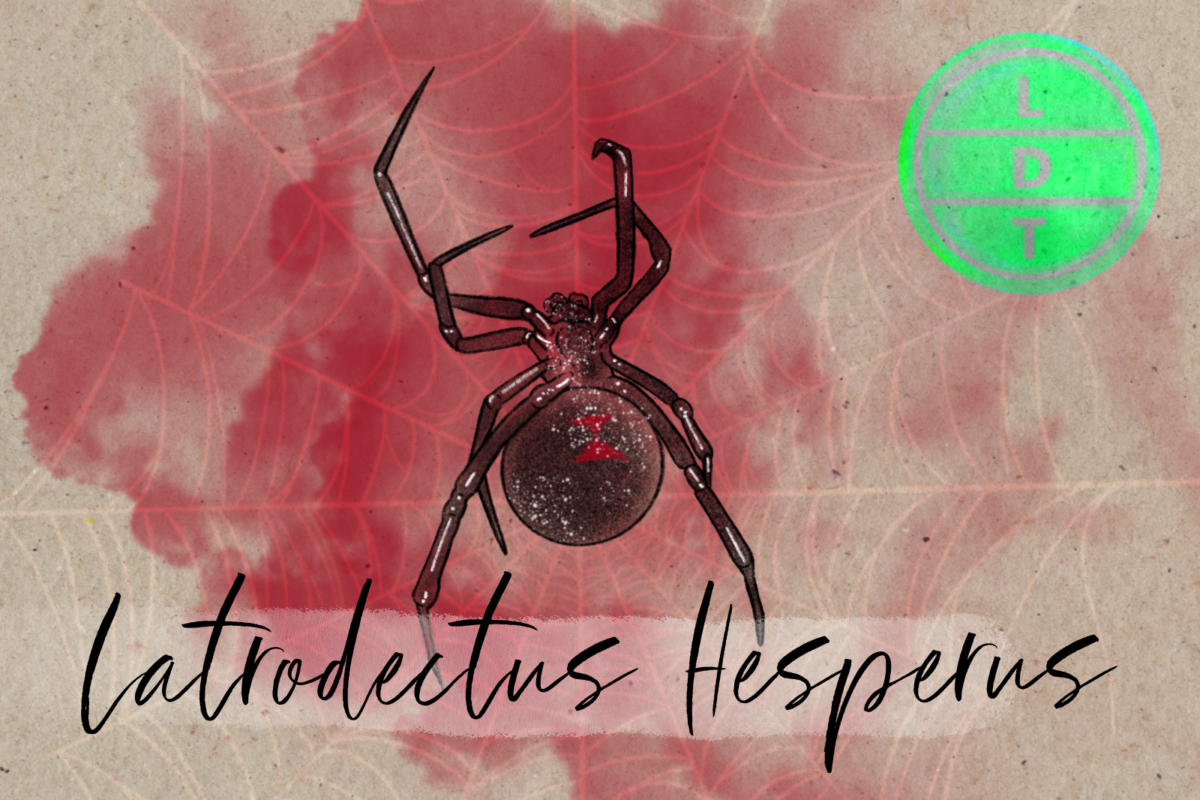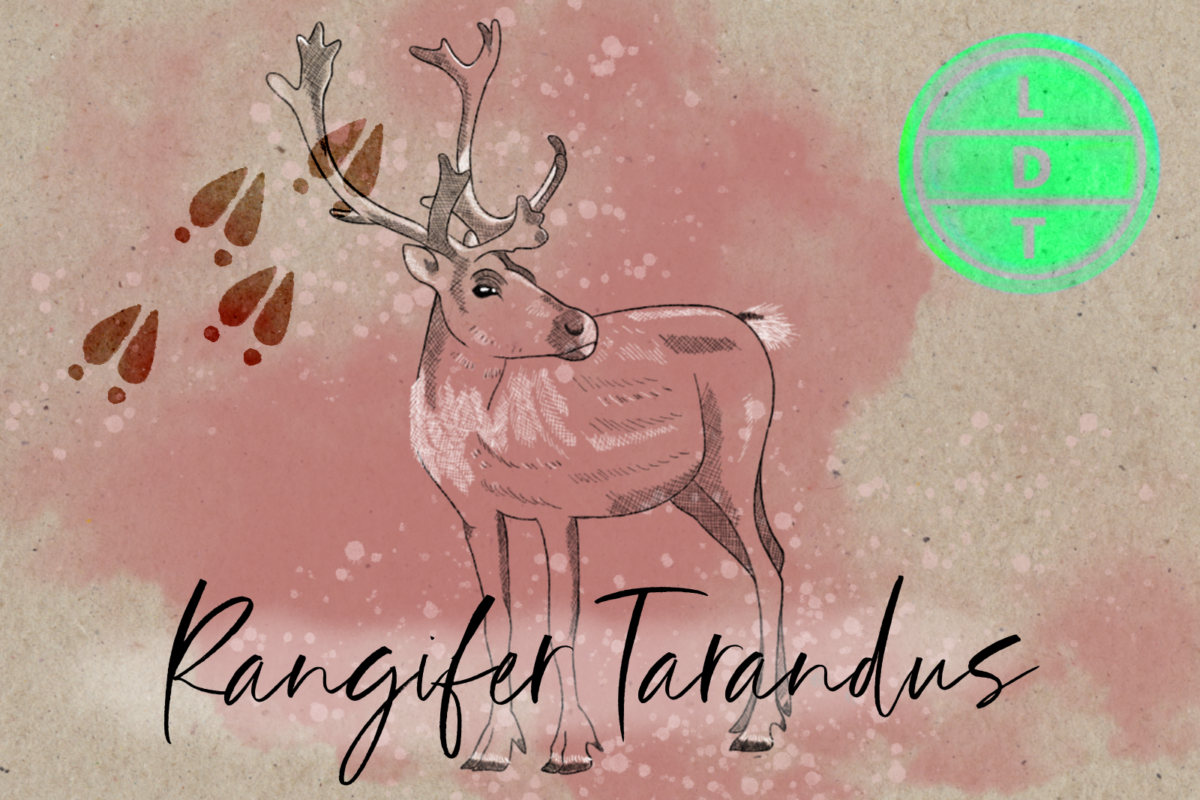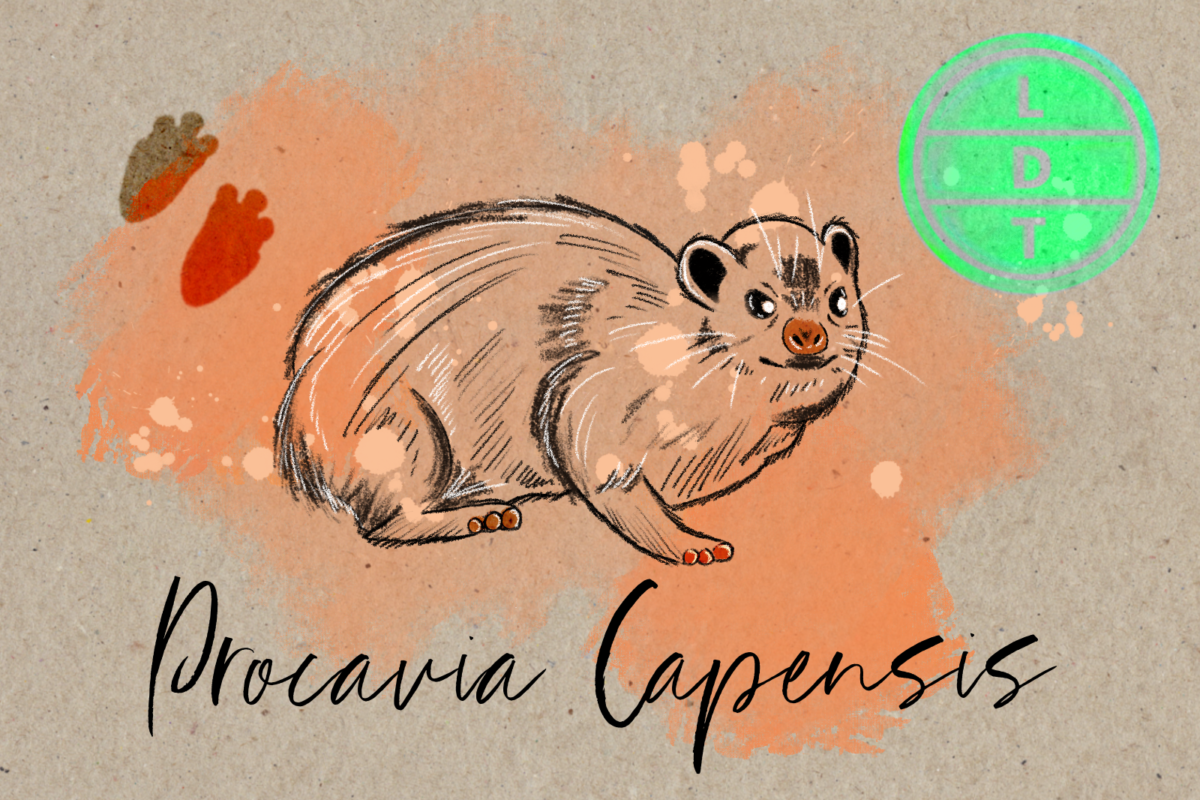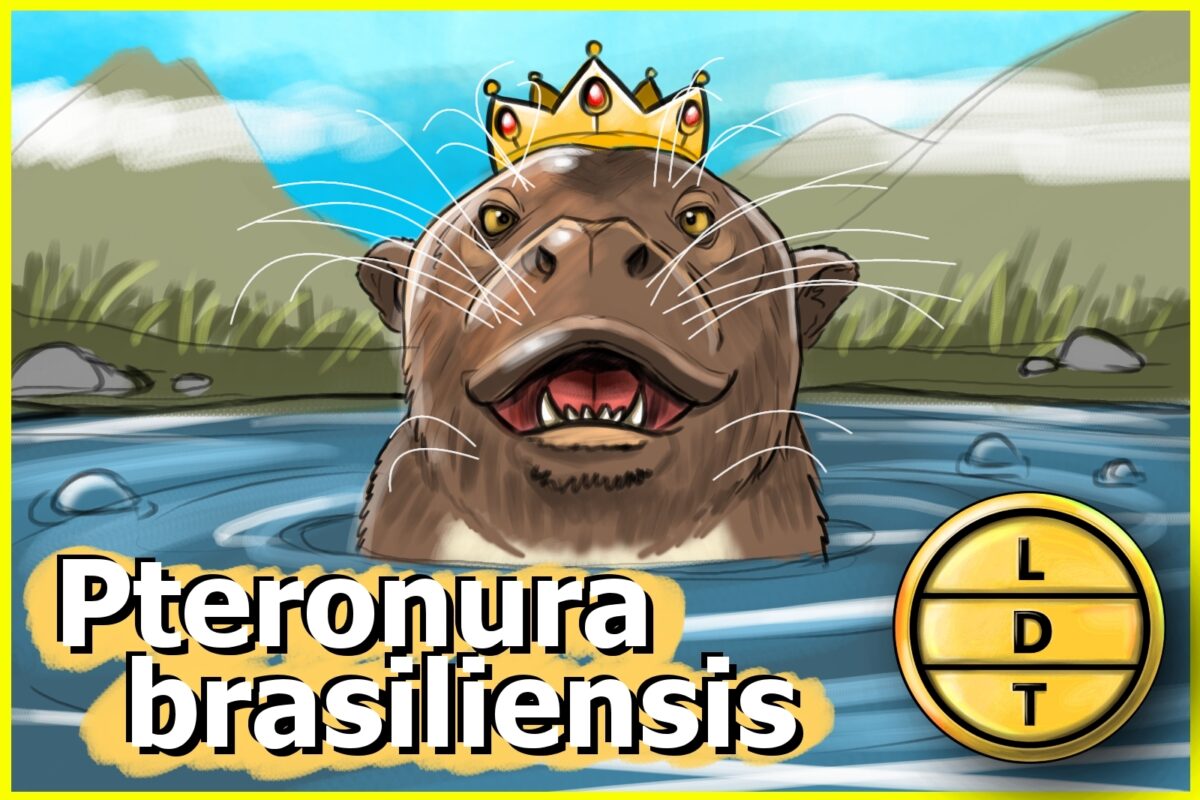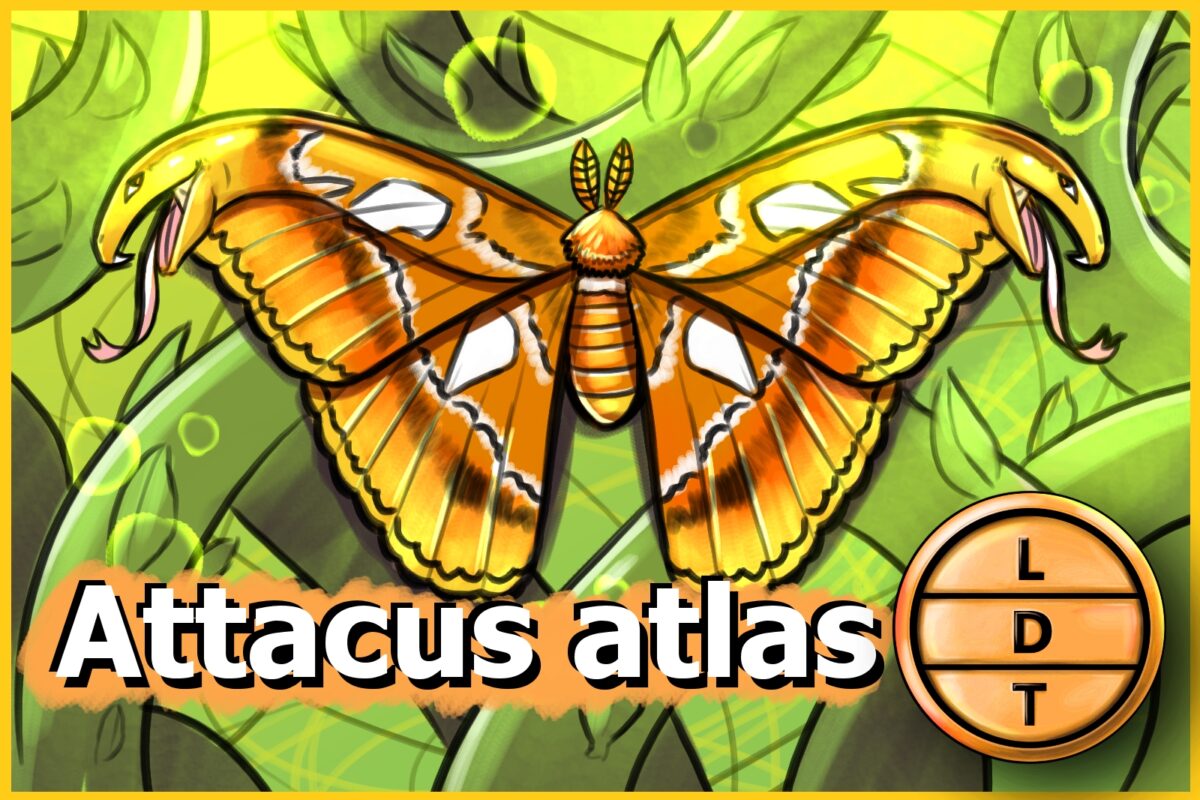“…and today we’re talking about a reptilian mood ring. But more on that later.”
You ain’t been blue till you’ve had that mood indigo? Maybe you’ve experienced red hot anger. For humans, it’s mostly metaphor, but there’s one animal that does display real mood-ring-like qualities. The chameleon is an alien looking reptile, a fact that makes it famously photogenic and a highly sought after exotic pet. But with fame comes misconceptions. The panther chameleon has an amazing talent that few people actually understand. But even creatures that seem alien are natural parts of Life, Death, and Taxonomy.
Description of the Panther Chameleon
Karma is a squat-bodied lizard with a vertically flat torso, large head, and long-curved tail.
Its triangular head juts straight out from its body and has a short ridge rising from its skull. Its head is also flanked by two massive eyeballs that stick out from their sockets.
These eyes are almost completely covered with their scaled eyelids, leaving only the pupil exposed. So it doesn’t have a lot of peripheral vision. To make up for this, it can rotate its eyes in a 180-degree arc. Plus its eyes can move and focus independently of each other, meaning it has a full 360-degree range of vision and can look at two different objects at the same time.
They also have good depth perception despite only seeing things with one eye at a time. This is because they don’t use stereopsis like we do (joining images from two eyes to judge distances), but they use monocular depth perception. This allows them to see small insects more than 30 feet away. That’s like seeing a hamster clearly from over 115 feet away for humans.
Chameleons actually have the highest magnification for their size of any vertebrate in the animal kingdom.
Chameleons also have knobbly legs with five-toed feet at the ends. Their toes are split into two groups – three on one side and five on the other – leading to a forked appearance (hence the furcifer part of their name) and this allows them to grip branches really well.
Their tails are long and prehensile, meaning they are controlled intentionally like a finger. A dog’s tail is basically just a furry meat stick they wag back and forth, so it’s not prehensile. However, a capuchin monkey can wrap its tail around branches and even pick things up, so it’s prehensile like the Chameleon’s.
They can see ultraviolet light and it even changes their social and mating behaviors. Lastly, their tongues are just like a frog’s. They fling their stickly tongues out at insects in 0.07 seconds. It accelerates from 0 to 60 in 1/100 of a second – twice as fast as the fastest car.
Measure Up
Welcome to the beloved Measure Up segment. The official listener’s favorite part of the show! The part of the show when we present the animal’s size and dimension in relatable terms through a quiz that’s fun for the whole family. It’s also the part of the show that’s introduced by you when you send in audio of yourself saying, singing, or chittering the words Measure Up into ldtaxonomy at gmail dot com. We don’t have a new Measure Up intro!
- Humpback whale
- Orca
- Baluga
- Whale shark
Length
- 16 – 20″ (40 – 51cm) long
- How many panther chameleons go into the longest single journey taken by a mammal?
- Hint: The journey is taken by the humpback whale that travels vast distances in search of food. A female was sighted off the coast of Brazil in August 1999 and it was later photographed in Madagascar in September 2001.
- 19,289,952 chameleons. The journey is 9,800 km (6,089 mi) long.
Male Weight
- 200 – 220 grams (7.05 ounces)
- How many chameleons go into the heaviest bird of all time?
- Hint: The bird is Aepyornis maximus or the giant elephant bird, which once lived in madagascar. It looks similar to an emu but it’s actually a close relative to the kiwi.
- 2,045 chameleons. The bird was 450 kg (1,000 lb).
Fast Facts about the Panther Chameleon
- Rang.: Lives in the forests of northeastern Madagascar
- Diet. In the wild, they usually eat mainly insects like worms, grubs, crickets, and grasshoppers. People often keep them as pets and feed them roaches, silkworms, and wax worms
- Behavior. They usually live about 3-6 years with females living only about 3 due to the strain of laying eggs.
Major Fact: Mood Ring Reptiles
We’ve mentioned before that the chameleon is thought to change colors to match their surroundings, but that’s actually a common misconception. In fact, there are several factors that trigger the color change, including light, mood, temperature and potentially sheer force of will.
Why do they change their color?
They are thought to change colors for two reasons and the first is communication. They are relatively solitary animals, but they do come together when it’s time to mate. When two males come together, they will puff themselves up and change color to establish dominance with the loser changing to a dull dark color.
They also change colors to manage thermoregulation. As cold blooded animals, controlling body temperature is essential. Darker colors allow them to absorb more heat and brighter colors reflect more light and heat. The changing colors allows them to fine tune more than just sitting on a warm rock.
Of course when it comes to camouflage, they have pattern disruption and countershading like other animals.
How do they change color?
Their color change can be stark, but it’s not as sophisticated as some cephalopods. And it’s a completely different mechanism.
Cephalopods primarily use chromatophores, but chameleons use something called iridophores. Iridophores aren’t pigments. Instead, they are crystalline structures that change shape. When they are at rest, they are an iridescent blue. When these crystals are excited, they change shape and change the wavelength of light that they reflect. When they are calm, the crystals bunch together. When they are stressed or excited, the crystals loosen, reflecting reds, yellows, and white.
There’s a second layer of iridophores that acts as a sun shield that the lizard can adjust to let in more or less sunlight.
We don’t know exactly how they control this, but it’s likely hormonal or neuronal.
But that’s not all. Panther chameleons have several layers of skin that aid in color changing. Including both iridophores and chromatophores.
- The top layer is a mix of xanthophores, which produce yellow, and erythrophores, which produce red-orange.
- Iridescent, light producing iridophores are also mixed into the top layer.
- Next is the reflective iridophore layer, for thermoregulation.
- Finally, is a brown melanophore layer.
So they change their actual skin color with the chromatophores, but they also adjust how you see those pigments by adjusting the iridophores. Green is an example of how they work together. Without the iridophores, chameleons would be red, yellow, or brown. But to make green, they change their skin pigment to yellow with the top layer of chromatophores and relax their iridophores to produce a blue light, creating green.
Finally, and less related. If you shine a UV light on a chameleon in the dark they will glow, but not their skin. Their bones.

